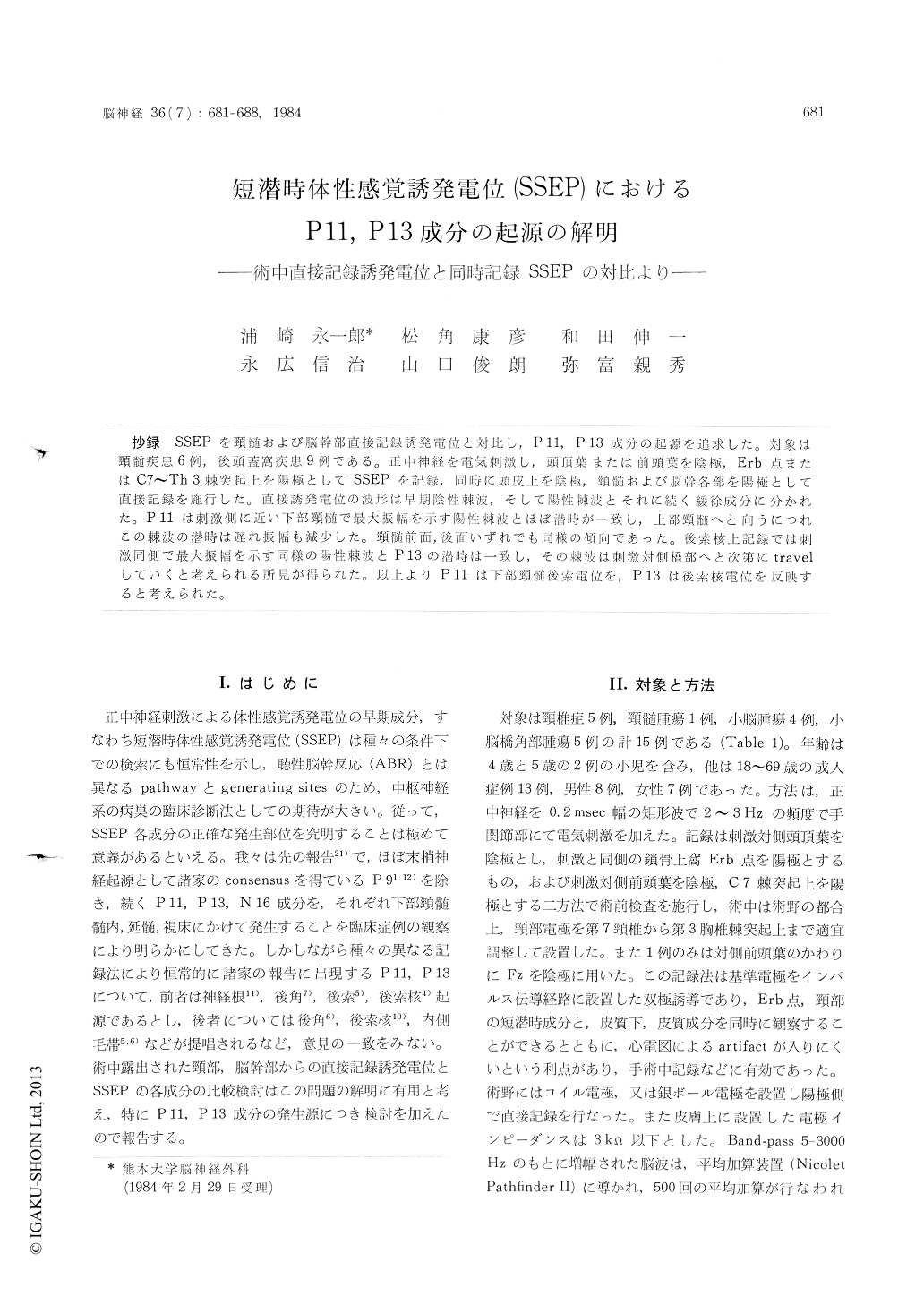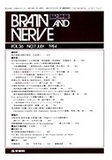Japanese
English
- 有料閲覧
- Abstract 文献概要
- 1ページ目 Look Inside
抄録 SSEPを頸髄および脳幹部直接記録誘発電位と対比し,P11,P13成分の起源を追求した。対象は頸髄疾患6例,後頭蓋窩疾患9例である。正中神経を電気刺激し,頭頂葉または前頭葉を陰極,Erb点またはC7〜Th 3棘突起上を陽極としてSSEPを記録,同時に頭皮上を陰極,頸髄および脳幹各部を陽極として直接記録を施行した。直接誘発電位の波形は早期陰性棘波,そして陽性棘波とそれに続く緩徐成分に分かれた。P11は刺激側に近い下部頸髄で最大振幅を示す陽性棘波とほぼ潜時が一致し,上部頸髄へと向うにつれこの棘波の潜時は遅れ振幅も減少した。頸髄前面,後面いずれでも同様の傾向であった。後索核上記録では刺激同側で最大振幅を示す同様の陽性棘波とP13の潜時は一致し,その棘波は刺激対側橋部へと次第にtravelしていくと考えられる所見が得られた。以上よりP11は下部頸髄後索電位を,P13は後索核電位を反映すると考えられた。
In 15 patients with cervical or posterior fossa lesion, SSEPs were recorded between the skull and the non-cephalic reference electrodes during the surgical operation and compared with the evoked potentials directly recorded at the same time from the surface of the cervical spinal cord and the brain stem.
The directly recorded evoked potential consisted of three main components appeared within about 25 ms., they were a small negative spike wave, a large positive spike wave and a subsequent slow potential. The positive spike wave of the evoked potentials recorded from the surface of the dorsal column was not only coincided in latency with component P11 of SSEP, but also showed the greatest amplitude at the lower cervical level. Moreover, the positive spike wave gradually de-layed in latency and reduced in amplitude from lower to upper cervical segments. The amplitude of the positive spike wave was greater at the surface of the dorsal column ipsilateral to the stimulated median nerve than that of contra-lateral recording. No polarity change was observed between the anterior and posterior surface of the spinal cord.
Similarly, the positive spike wave of the evoked potentials, recorded from the surface of the brain stem, showed fairly same latency with P13 and a maximal amplitude at the surface of the cuneate tuberculum ipsilateral to the median nerve stimu-lated, and those positive spike wave traveled to contra-lateral ventral surface of the pons, presum-ably from ipsilateral cuneate nucleus to the contra-lateral medial lemniscus.
The result of this study indicated that component P11 reflected action potentials of the dorsal column at the lower cervical level, and P13 was generated by the cuneate nucleus ipsilateral to the median nerve stimulated.

Copyright © 1984, Igaku-Shoin Ltd. All rights reserved.


